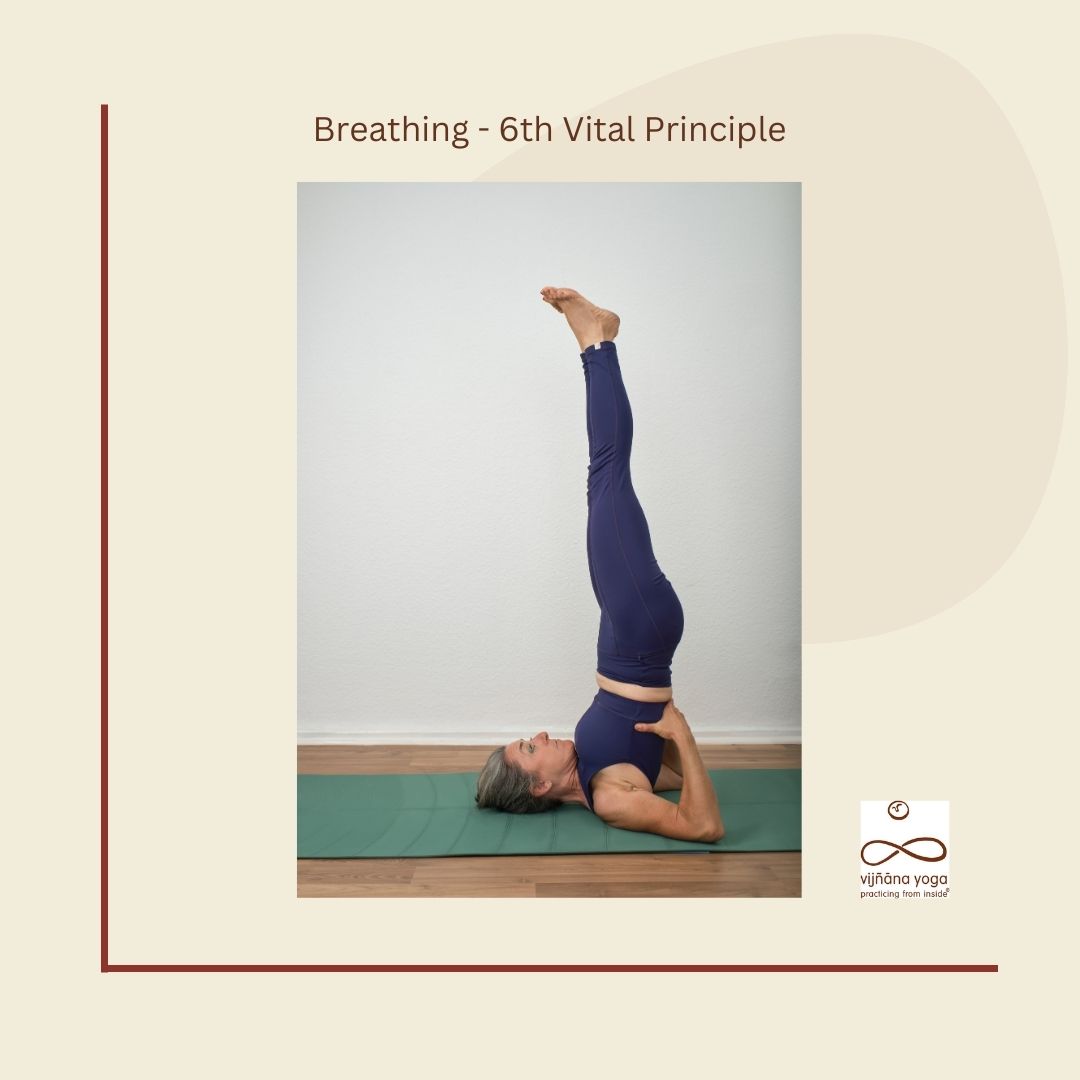Breathing is the sixth most important vital principle of Vijñãna Yoga, after relaxation, quietness of the mind, intention, rooting and connection. When the breath moves, the mind moves. Therefore, by controlling the breath, the yogi attains stability of the mind,
Without tension
When we work on controlling the rhythm of the breath, we need to do less than we can, so as not to create tension or push. Pranayama and force don’t do well together.
Before we begin the practice, we need to relax a little and study the natural breath, just observe it, connect with it. It’s good to always listen to the sound of our breath, even if we are experienced in the practice of pranayama (breathing exercises). Pranayama is NOT just a set of breathing exercises. It is always a relationship between the mind and the breath. That’s why it always begins by observing the breath. 😉
Restraining
After stabilising the body and mind in the posture, we can begin the practice of breathing. It is said that focusing on the transitions between inhaling and exhaling, also known as ‘kumbhakas’, and staying there, is pranayama. By focusing our attention on slowly exhaling until the end, breathing stops. And this stopping, this cutting off of the breathing process, is pranayama in the truest sense of the word: the purpose of this practice is to breathe as little as possible, because it is said that each of us has only a limited number of inhalations and exhalations.
Gentle, smooth and continuous
In the classical texts on Pranayama, it is written that the breath should be gentle, smooth and continuous, and that one should breathe slowly.
👉 Gentle means that the breath is almost not heard or felt at all.
👉 Smooth means that at any given moment there is the same intensity of air flowing in and out!
👉 Continuous implies the same breath, without interruption, with the same intensity all the time, gradually becoming longer.
Removing obstacles
In the course of a lifetime certain tensions and obstacles build up in the body. They become physical obstacles. There are many channels (nadis) through which the breath or prana moves in the body. These channels become cleaner and clearer as the breath becomes more subtle. Pranayama is the piercing of these blockages within you. It dissolves the knots that prevent Prana from flowing free. So we strive to remove both internal and external obstacles, in the knowledge that when the air moves freely, consciousness stabilises.
How can we keep our focus on the breath in our practice?
Be aware of the inhalation, the exhalation and the pauses between the two. Breathe in along the body, breathe out and root. Breathe in and connect with the furthest part of the body, Breathe out and move into the final posture.As you breathe in, the body expands and widens; as you breathe out, it settles into rooting and connecting.
I hope that my take on Vijñana Yoga will help you to better understand the importance of pranayama / breath work in your own yoga practice. I’d love to hear about your experiences in the comments. 👇
Take care and stay safe.
Sandra 💖
BOOK REFERENCE:
Sen-Gupta,O. (2013) – A little book of yoga
Sen-Gupta,O. (2013) -The Heart of Practice – Understanding yoga from inside

